The most impressive Southern Magnolia (Magnolia Grandiflora) in Dallas-Fort Worth lives at the Fort Worth Botanic Garden. The picture above shows a view of it from near one of the Garden roads (along with a few tiny, other trees). Many magnolias in Fort Worth are impressively tall — for example, the one pictured below, which grows next to the library of my alma mater, TCU — but the one at the Botanic Gardens is the best!
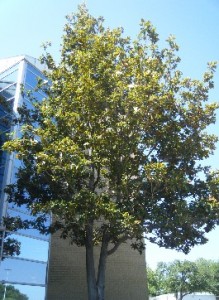
A TCU Library Magnolia
From some angles, the Garden’s huge magnolia can at first look like many trees, not one. That’s why I never(!) truly noticed it; I mistakenly saw a big stand of multiple trees, not a single special individual. This past May, however, Kate — a special individual herself — showed me one of the “secret entrances” to the “cave” made by the magnolia’s drooping branches.
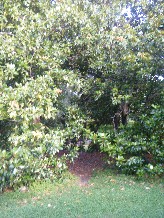
- A Secret Entrance to the Big Magnolia Cave
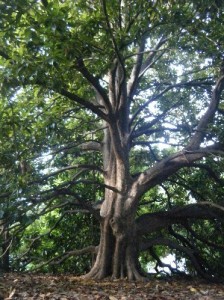
The Secret Magnolia Cave
Texas Tree Trails has a page with many facts and pictures about this particular magnolia. A few facts about the tree taken from that site and elsewhere:
- As of 2004, the tree is 64 feet tall.
- Leaf: Leathery top, fuzzy red-brownish underside, evergreen, alternate simple (whorling at tip), asymmetrical base, pinnately veined, oval-shaped, 5-8 inches long, untoothed margin.
- Flower: Large (6-8+ inches wide), creamy white, fragrant. Borne singly, May-June.
- Fruit: Cylindrical aggregate of follicles (“seed pod”). Green changing to red. Matures Oct-Nov.
- Twig: Stout. It gives off a citrus scent if broken.
- Bark: Brown to gray, thin, smooth when young, but plating or scaling later in life.
- The Southern Magnolia is sometimes called an Evergreen Magnolia, or a Bull-bay.
I took four pictures of the tree’s flowers, each illustrating a different stage of the flower life cycle. You can learn much more about the magnolia flower life cycle, and see pictures of it, at this website.

The Flower Before Blooming
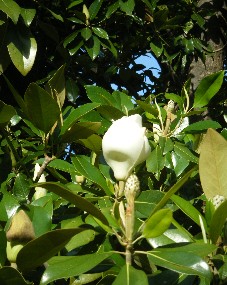
The Flower Begins to Bloom
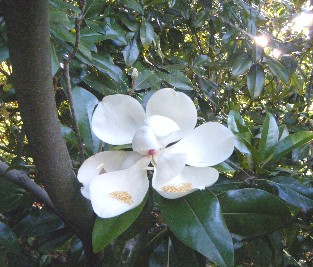
The Flower Has Bloomed
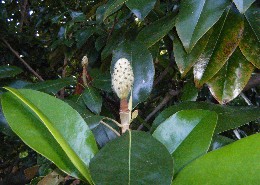
The Fruit; Flower Petals Have Fallen

- The Best Field Guide to North American Trees
I use the National Wildlife Federation Field Guide to Trees of North America (above). Highly recommended; full of color photographs.
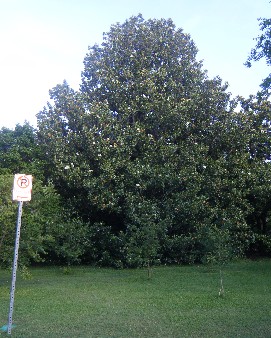
 Twitter:
Twitter:
Join the conversation